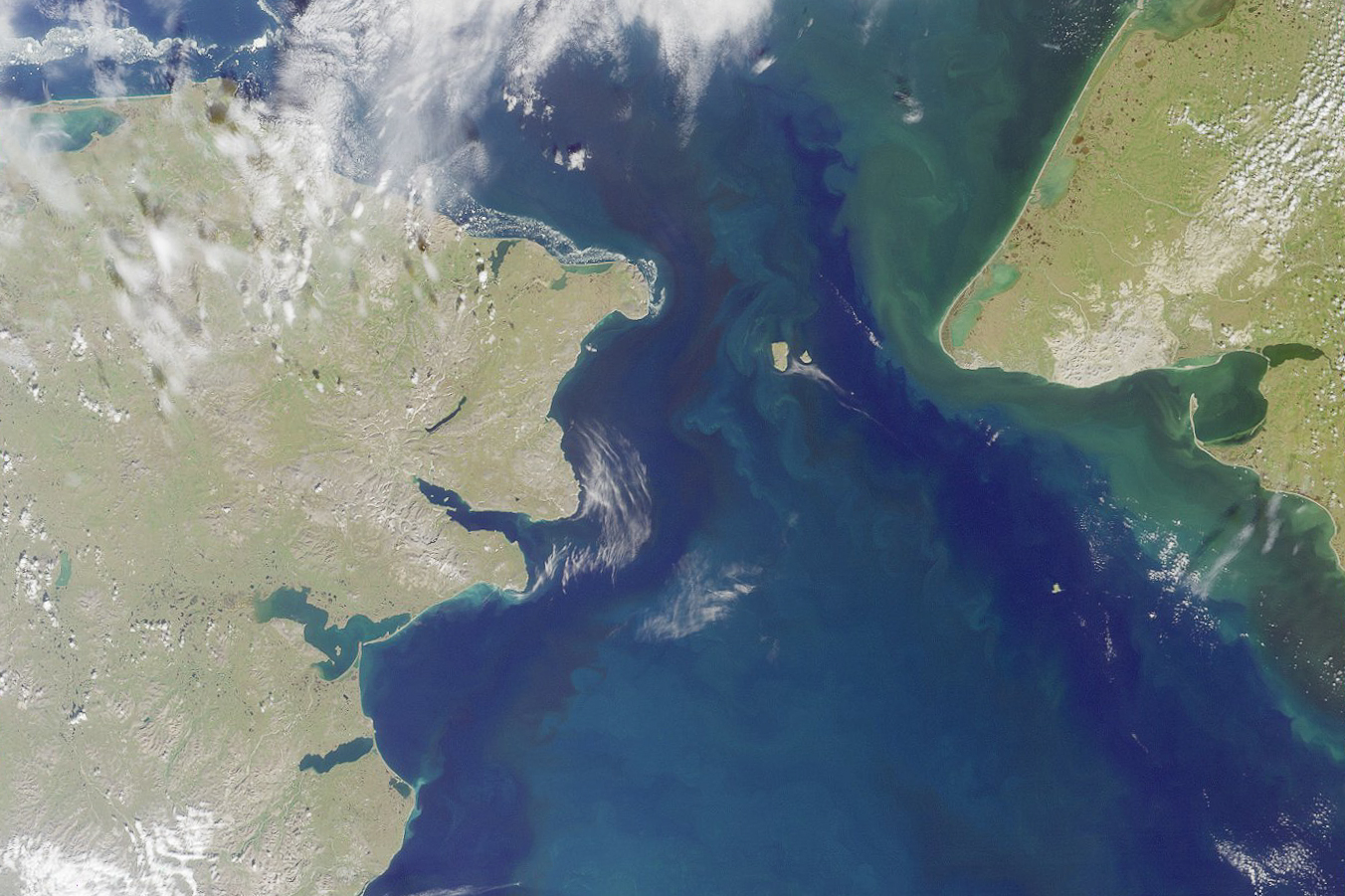Is the world ready for a Bering Strait rail link between Alaska and Russia?
Proposals for a bridge or tunnel linking Eurasia and North American via the Bering Strait have cropped up for more than a century. Are the latest plans any more plausible than previous ones?

In 1890, Colorado Gov. William Gilpin called for a new worldwide railroad system to connect the greatest cities on five continents.
His book, “The Cosmopolitan Railway: Compacting and Fusing Together All the World’s Continents,” envisioned a railroad bridge that would connect Alaska and Russia at the Bering Strait.
Two years later, an engineering student in Cincinnati wrote a senior thesis on a Bering Strait Bridge. The student never got the chance to connect the continents that way, but Joseph Strauss did leave his mark by building the Golden Gate Bridge in San Francisco.
In the early 1900s, a Bering Strait bridge seemed possible to dreamers and promoters who thought it was far more practical than flying through the air.
“We will be running through trains in five or six years,” French engineer Loicq de Lobel said in 1902. “No more seasickness, no more dangers of wrecked liners, a fast trip in palace cars with every convenience.”
While no less an authority than President Theodore Roosevelt deemed a railroad a crackpot scheme, it was internal Russian politics that led the tsar to block any efforts to remake the world transportation map with a Bering Strait crossing. The Russian rulers worried about an invasion of gold-seeking Americans.
Over the past century, proponents on the fringe of world politics who dream of world peace or economic bonanza have tried to pursue a tunnel or bridge, with each new venture stopped cold by geography and enormous costs.
The idea has never died out completely, however, and it resurfaces whenever a visionary looks at a world map and sees that tiny gap between Alaska and the Russian Far East.
How difficult would it be to cover 82 kilometers with a bridge or tunnel and change the world?
As it turns out, far more difficult than anyone has imagined.
In Alaska, an entity known as the Intercontinental Railway is still trying to generate enthusiasm for one of the most ambitious projects in the world.
Retired mining engineer George Koumal, lawyer Joe Henri and railroad consultant Scott Spencer said it could be the most important thing on the horizon for Alaska.
“At this point in the 21st century, Alaska is poised to be transformed over its next 60 years by an innovative transportation project — the InterContinental Railway. The project would build more than 5,000 miles of new railroad to connect North America with Russia and Asia via Alaska and a 60-mile tunnel under the Bering Strait,” they wrote in a January newspaper column.
“Although the InterContinental Railway will cost more than $100 billion to construct, private international construction consortiums are expected to maximize the use of private financing to reduce the need for direct government financing. The ICR price tag is also a bargain, because the Bering Strait rail tunnel and infrastructure assets will have a useful life of between 100 years and 200 years, creating economic growth and activity for generations to come in Alaska.”
What they share with everyone who has ever talked up a Bering Strait bridge or tunnel since the Gilpin “Cosmopolitan Railway” is a penchant to describe the concept in lofty terms.
“The ICR will also transform the future of global commerce and international relations by building a remarkable transportation asset for the peace, progress and prosperity of all nations involved,” the three wrote.
As always, there are enormous political and economic obstacles to a worldwide railroad plan.
Internal U.S, and Russian politics would create formidable obstacles, but China would probably see merit in an expansion of the “Polar Silk Road” to include a continental crossing.
In 2014, a state-run newspaper in Beijing mentioned that officials had been in discussions with Russia for a rail line that would connect China, Russia, the United States and Canada, including a 200-kilometer tunnel to Alaska.
In 2015, the head of the Russian Academy of Science, picked up on the idea of a development plan that would allow Russia to conquer the obstacles of the past.
‘The idea is that basing on the new technology of high-speed rail transport we can build a new railway near the Trans-Siberian Railway with the opportunity to go to Chukotka and Bering Strait and then to the American continent,” Vladimir Fortov told the Siberian Times.
But so far, it remains an idea whose time has not come — the ultimate bridge to nowhere.
Columnist Dermot Cole lives in Fairbanks.